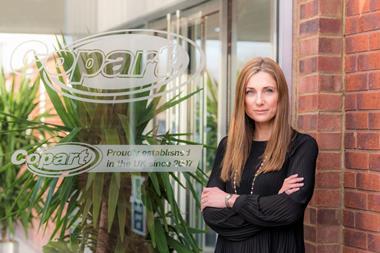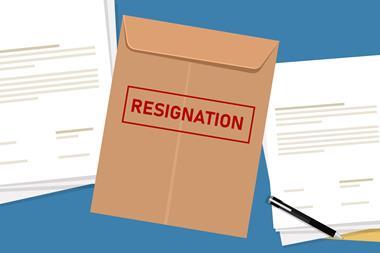The insurer cites a pricing and underwriting revamp as one of the main causes for the turnaround
General insurer Ageas has returned its home book to profitability, reporting a £275.2m gross inflow in its 2019 full-year financial results, published today.
This reflects an 86.9% combined ratio compared to 102% at this point last year.
Andy Watson, chief executive at Ageas UK, attributed this, in part, to 2019’s benign weather.
“We didn’t have any major weather events in 2019, but I wouldn’t say [returning to profitability] was just good fortune because of the weather,” he added.
“We’ve been doing a lot of work in pricing and underwriting; we’ve revamped quite significantly our ratings engine in households, so pricing and underwriting have certainly been progressed quite significantly.
“And also, we’ve taken a very long look at the way that we handle some household claims, in particular escape of water, and we’ve made some changes in the way that we handle those claims so that we continue to settle the claims that are absolutely the right level, but do so very efficiently and cost effectively.
“It’s been a range of activity and a range of actions really for 2019; it might not be quite the same [for 2020] given Ciara and Dennis.”
Claims inflation
Watson observed that claims inflation, which is rising by 7% to 8%, is a further issue on Ageas’s radar – he identified two one-off events and one underlying cause as impacting this increase.
He said: “First of all, the Ogden rate changed in the middle of the year and it changed to -0.25% and I think most people were starting to assume that it would be somewhere between 0% and 1%, and therefore that meant that claims reserves have to increase. That was one one-off in the middle of last year.
“Towards the end of [2019], reinsurance premiums have increased quite significantly and we at Ageas have seen that and we have been made aware of the reinsurance premium increases elsewhere in the market, so that is definitely a feature as well.
“And then there is the underlying claims inflation, if you like, which is on the increase. There will be a number of reasons for that; foreign exchange rates changing meaning that importing parts is more expensive than it was a while ago, more technology in cars meaning that replacing parts that are more sophisticated because of the technology they include is increasing the cost of claims.
“That’s the reason why. Ogden, reinsurance rates and then general increases on damage and, to a certain extent, personal injury as well.”
‘Unsustainable’ motor premiums
Within its UK motor line, Ageas recorded a gross inflow of £778.5m for 2019 – a drop compared to 2018’s £788.4m gross inflow.
In terms of combined ratio, this increased from 93.4% in 2018 to 101.5% for 2019; an unsurprising find according to Watson, who believes that motor premiums have become “unsustainable”.
He explained: “If you’ve got claims increasing at 8% and premiums are increasing at less than 8%, it’s no surprise that combined operating ratios will increase and profitability will decrease. You can’t go on for a long period of time with your main cost increasing faster than premiums increase and premiums over the course of 2019 probably fell actually, so the situation was very strange indeed.
“We’re trying to put price increases through to match the level of claims inflation we’re seeing. I suspect others are doing the same now because, certainly during the first few weeks of 2020, we have seen premiums start to increase, which has to be the right thing to do when your major cost is increasing.
“It’s very simple in terms of what insurers need to do if they want to maintain profitability; they need to be pricing to at least claims inflation and we haven’t seen that during the course of 2019. We’re not yet seeing it in 2020, but at least prices are starting to increase.”
Profit and loss
Ageas’s gross income for 2019 hit £1.5bn, with a net result of £60.3m – 2018’s net result, on the other hand, reached £76.7m, showing a 21% year-on-year drop. Gross income also declined by 3% between 2018 and 2019.
In its travel and other business line, Ageas recorded a gross inflow of £152.9m, versus £165.1m last year. Its combined ratio for this portfolio in 2019 is 104.3%, similar to 2018’s 104.1% result.
Ageas noted in its full-year results that underlying business growth could be attributed to a significant increase in the number of customers buying car insurance direct through an aggregator channel. Other influencing factors include new deals in the intermediated household market and a growth in commercial lines business sold through digital channels.
For Watson, however, 2019 was very much about getting back on track financially after a difficult year in 2018.
He said: “One of the things we were very concerned about in 2018 is that during the course of that year, our premiums decreased overall by about 11%. It was really important to us in 2019 that we stabilise that situation and we’ve been able to do that, so we’re very pleased about that, not least because the market was probably more difficult in 2019 than we were anticipating with loads of premiums falling.
“We’ve worked closely with our brokers to make sure that we are realising all the opportunities that we have with them. In particular, during the course of 2019, our household account has been very strong and we’ve managed to grow that.
“We’ve signed new deals with [Uris Group] and Post Office, which had some impact in 2019; they’ll have greater impact in 2020.
“One of the things that was really important to us was that we stabilised our premium income. We’ve done that. We now have the basis to look forward to a period of growth, but that stabilisation was really important for us in 2018 through to 2019.”
Broker relationships
Developing and maintaining broker partnerships is another key thread for Ageas – Watson said that 80% of the firm’s business comes through brokers and partners. Despite this, severing ties with unprofitable schemes and partnerships has been one of the main measures Ageas has used to boost business profits.
“We’re looking, as always, to work with strong brokers, strong partners where we can be mutually supportive. If, over a period of time, we find that the relationship’s not working for either them or us, then we will review that and potentially exit and that certainly was a feature in 2018 and, to a certain extent, in 2019 as well,” Watson explained.
However, Watson added that Ageas is on the hunt to expand its offering, moving from strictly personal lines business into the small commercial market; this is an area he wants to work more closely with brokers on.
He continued: “An area we’re keen to grow and have been for a while now is small commercial, so I think brokers know that Ageas is one of, if not the biggest supporter of personal lines products, in motor and home, in the UK and we’re keen to build on that, but we’re also keen to support brokers on small commercial products as well.”
New partnerships
In terms of partnerships, Ageas announced on Monday that it would be underwriting a number of new home insurance products for the Post Office.
Speaking on this, Watson said: “We look for opportunities that fit into the broker partnership space. We need to be very confident that it will be a sustainable relationship going forward that will work for both ourselves and the partner.
“Obviously we want to be looking in the product areas that we are keen to write, motor, household and small commercial, so absolutely [it] will be part of our distribution strategy going forwards.”













































No comments yet